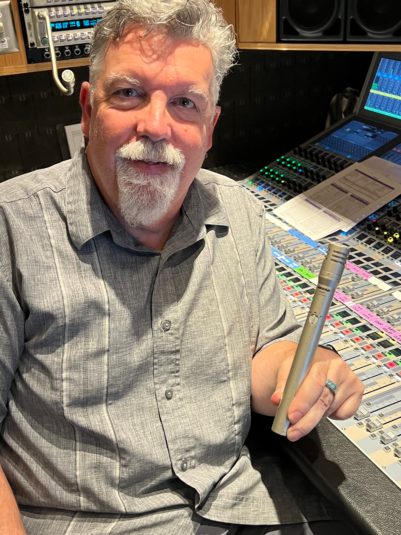WBD Sports’ NBA Audio Continues TNT’s Sonic Legacy
Shure mic arrays and custom-made transducers are deployed on and around the court
Story Highlights
The sound of NBA basketball on Warner Bros. Discovery Sports (formerly Turner Sports) this season will be the culmination of experimentation that goes back several years and a global pandemic.
According to Dave Grundtvig, senior audio supervisor, remote operations, WBD Sports, the audio operation deploys Shure MXA710 microphone arrays, a series of in-line transducers originally created for the conference-room market and adapted for broadcast sports starting with this year’s NBA Summer League. Also being used are the custom-made, balanced, active-buffer pressure transducers he developed for the NBA during the COVID pandemic.
Six of the Shure mics are arrayed around the court: two on either side at floor level, two more attached to the basket stanchion. Meanwhile, four to six of the pressure-transducer microphones are attached to the courts, picking up the impact — as opposed to the direct sound — of basketballs bouncing and sneakers squeaking.
“Those are the most basic, recognizable sound effects of basketball,” notes Grundtvig. “These [mics] are effective and efficient ways to capture them.”
Shure’s four-transducer array was originally intended to be installed in the ceilings of corporate conference rooms, using its proprietary Intellimix software to automatically steer, process, and ultimately mix voices based on programmable parameters. For instance, it can be tuned to listen for certain types of sounds or frequencies and either enhance or reject them.
During the Summer League, Grundtvig found that the software can detect key action near the mics and automatically highlight their sound in the broadcast mix. Additionally, the software’s Denoiser function can automatically duck extraneous sounds around the arrays and keep the remotely aimable microphones continuously focused on the action.
“The AI in the software can strip away all the arena audio artifacts and pull out the nuances of the play action on the floor and around the baskets,” he explains. “In arena sports, the challenge has always been extracting the desired audio from the noise around it in a hostile acoustical environment. This turned out to be a great and effective way to do that. It was mind-blowing during Summer League, and I’m sure it’ll work just as well for NBA.”
Each array under each basket has three active transducer lobes, Grundtvig says: one pointing toward the foul line, the other two toward the corners of the court. Based on such parameters as gainsharing, the lobes open and close themselves as the action moves beneath them (and more quickly than could a human finger on a fader, he adds), with that self-mixing process further enhanced by the application of the Denoiser function. A similar arrangement is used for floor-mounted arrays, whose lobes are aimed at the center-court and 3-point–shot lines.
It also takes some of the workload off the A1s, he adds, using the automixing feature of the arrays’ software to create separate mixes from each of the six MXA710 units deployed, then automixing them down to a stereo-effects feed to the broadcast-truck console.
The custom transducer microphones are taped to the court surface or inserted beneath it about a foot in at the baselines and mostly under the stanchion (with several also on the backboards). They do not, however, extend to the underside of the court floor, a method Grundtvig deployed for the NBA’s 2020-21 “bubble” in Orlando. (“Unlike in the NBA bubble,” he says, “I no longer have access to the underside of the entire court.”) As in Orlando, the microphones are simply left on, picking up the action on the wood surface as players move about.
“You can pretty much leave them alone because they’re not picking up the arena music or other artifacts,” he says, “but you’re getting that nice percussive effect from them.”
All the effects sound is being transported via Dante over just two strands of fiber cabling, which Grundtvig notes further reduces manpower requirements by vastly reducing the number of microphone lines that need to be run.
Although the audio is 5.1 surround again, he expects to continue experimenting with Dolby Atmos this season. “We’ve already done the proof of concept around Atmos for NBA,” he says. “The problem is downstream, with the distribution of immersive audio through the cable-television infrastructure. But it’ll get there.”
The NBA season has also seen the return of the Q5X PlayerMic, a very small and light transmitter soft-sided to minimize the potential for injury in case of a fall.
WBD Sports, whose team is entering its 39th consecutive year of NBA coverage, has a 65-game schedule for the 2022-23 NBA regular season. It started with the Oct. 18 blockbuster Opening Night doubleheader and will feature a Martin Luther King Jr. Day doubleheader and appearances by the defending NBA champion Golden State Warriors and other top teams.

